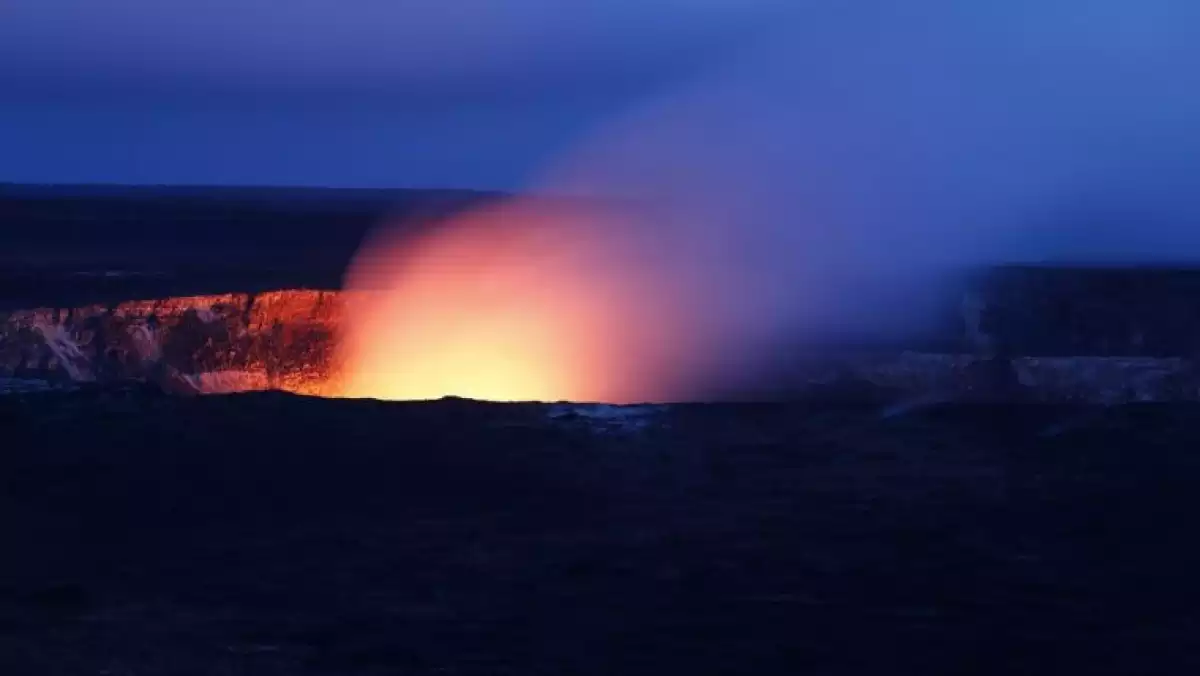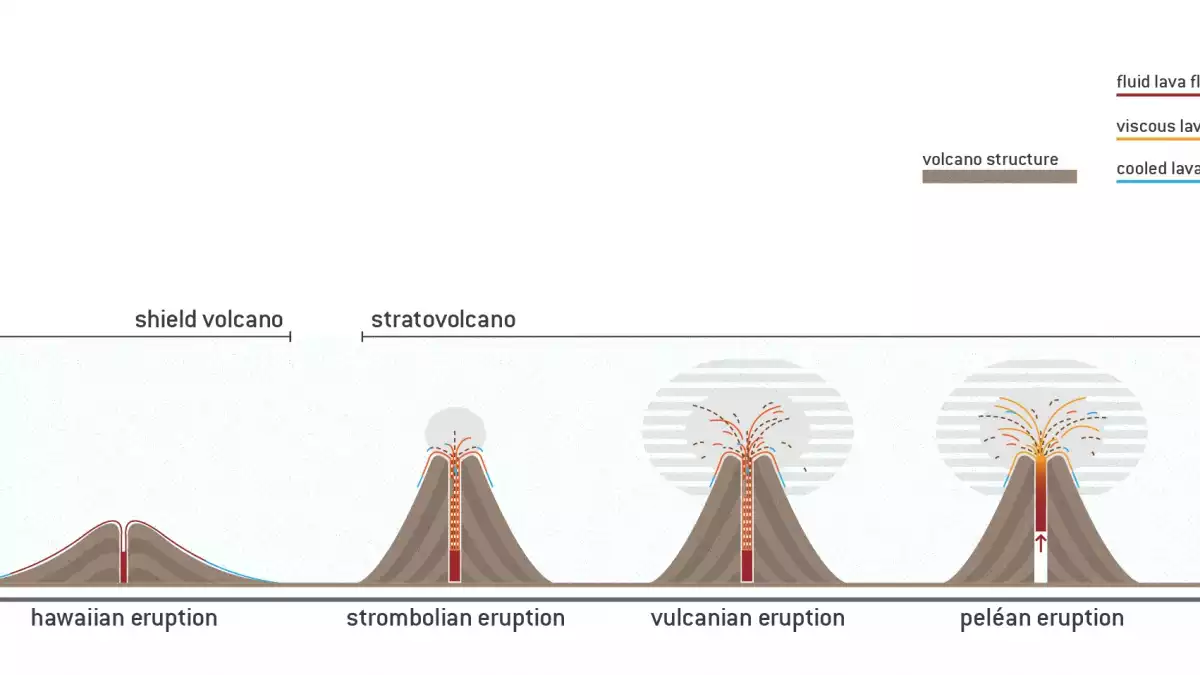
Just like with icebergs, most parts of a volcano aren't visible to the naked eye. In fact, most are far beneath the vent that spews lava since these rocky structures extend kilometers into the belly of the Earth. Let's get to know more about the inside of these geographic marvels.
9 Parts of a volcano from the inside
From the depths of the lithosphere to the Earth's crust, these are the parts of a volcano according to science:
1. Magma chamber
This is the part of the volcano located deepest underground, even beneath the Earth's crust. The width of the magma chamber ranges from just a few kilometers up to dozens wide (they've documented some with more than a 70-kilometer radius).
To sum things up, the magma chamber is the place where magma accumulates and then gets forced out when exposed to enough pressure since this subterranean chamber isn't sealed entirely and has a tiny opening where the magma pushes through.
2. Lava dome
The lava dome is one of the parts of a volcano that isn't present in all of these geographical formations since its configuration depends on how thick the lava within is. It's formed by hardened lava after an eruption and that due to its viscosity, hasn't been able to slide down the side of the mountain. So, it starts piling up and covers the edges of the crater without spreading, shaping the mountain's appearance and even making it seem taller if the fireproof material it spits cools off.
3. Magmatic dike
In volcanology, magmatic dikes are the internal gaps that appear as the magma makes its way through to the Earth's surface. These parts of a volcano appear due to the underground pressure which causes cracking. However, the magma doesn't always make its way outside. If it does, these are called 'vents' -fissures where the internal pressure created by the magma and toxic gases is relieved.
Related: The End Of The World: Between Science And Religion
4. Vent
This is the passageway that links the magma chamber to the exit that the magma spews out of, along with the gases expelled when the volcano begins to erupt. Sometimes, volcanoes start erupting so savagely that they also drag chunks of rocks that shape the vent's outline. This debris flies upward when the mountain bellows and falls after in the form of a pebbly rain that you'd better take shelter from.
5. Fissure vents
The vent isn't the only volcano part that releases magma. Actually, new secondary passages can open up to relieve pressure that this mass of melted stone and gas produces. The name for these is 'fissure vents,' and they can appear on the cone's surface or far from the center of the eruption, several kilometers away.
6. Volcanic cone
The volcanic cone is located at the surface of this formation. It's made up of hardened lava and the remnants of previously erupted volcanic rock that's accumulated over the centuries, carving the sides of the mountain. Depending on its diameter, you can deduce whether the volcano is often active or not.
7. Caldera
To a novice eye, this could look just like the cone, when in reality, the peak's mouth is much larger. The caldera is a depression that appears on the Earth's surface once the magma chamber has released all of its content. As it empties, a huge hole remains that dips down since the Earth's crust loses support, creating a natural circular cavity within the mountain whose circumference can grow so huge that it's only visible from a bird's eye view.
8. Crater
The lava exits through the crater, the hole that cracks the mountain's peak. Formed millions of years ago by explosions in the mountain that fractured the top of the vent, of all of the parts of a volcano, the crater is the one that gives this geological formation its identifiable appearance.
9. Lava
Some volcanologists don't think that the lava should be considered one of the parts of a volcano per se. However, others do since they think that it's what defines a volcano's existence, even though it's the material that this formation expels.
The difference between lava and magma is that lava becomes magma upon leaving the volcano when it erupts. As it exits the vent and flows out, this mass of melted stone changes in its original composition since it gets mixed with toxic gases and debris.
Related: Dinosaurs: Classification And Names
4 Types of volcanic eruption
Now we'll take a look at how a volcano gets rid of its magma; there are 4 types of volcanic eruption in nature. These are their main characteristics:

1. Strombolian
Unlike other types of volcanoes, the strombolian variety spews denser lava and amasses so much gas underground, that the pressure can cause subterranean explosions.
During this type of volcanic eruption, due to its compact nature, the lava flows out slowly down the sides and stays near the crater since it doesn't move enough. When it cools off, it hardens and coats the volcano's profile with a new layer of rocks.
2. Hawaiian eruption
A Hawaiian volcanic eruption doesn't generate as much gas, so its internal activity isn't as violent. In this case, the lava flows more easily and can escape through rivers that move downstream without any difficulty, spreading beyond the sides of the volcano.
3. Pelean
In this type of volcanic eruption, the lava that comes out is extremely gooey. If it's able to make its way out, it moves slowly yet relentlessly through the vent, producing a large amount of poisonous gas. However, the sheer density of the lava can end up tapping the exit, causing these emissions to open new fissure vents across the Earth's surface, making the air unbreathable in the area.
4. Vesuvian eruption
Named after the terrible volcano that buried the inhabitants of Pompeii and Herculaneum under a blanket of ashes, vesuvian volcanic eruptions store a tremendous amount of gas that explodes like clouds of ashes. When they explode in the air, it rains ashes and spews sediment. In turn, the lava is so thick that it ends up solidifying quite quickly, although it generates gas internally that comes out in the flowing lava rivers.
Check out the original article: Las 9 partes de un volcán (y los 4 tipos que existen) at caracterurbano.com

